Other
Sparrow Frost Black: A Mythical Bird or Misidentified Sparrow
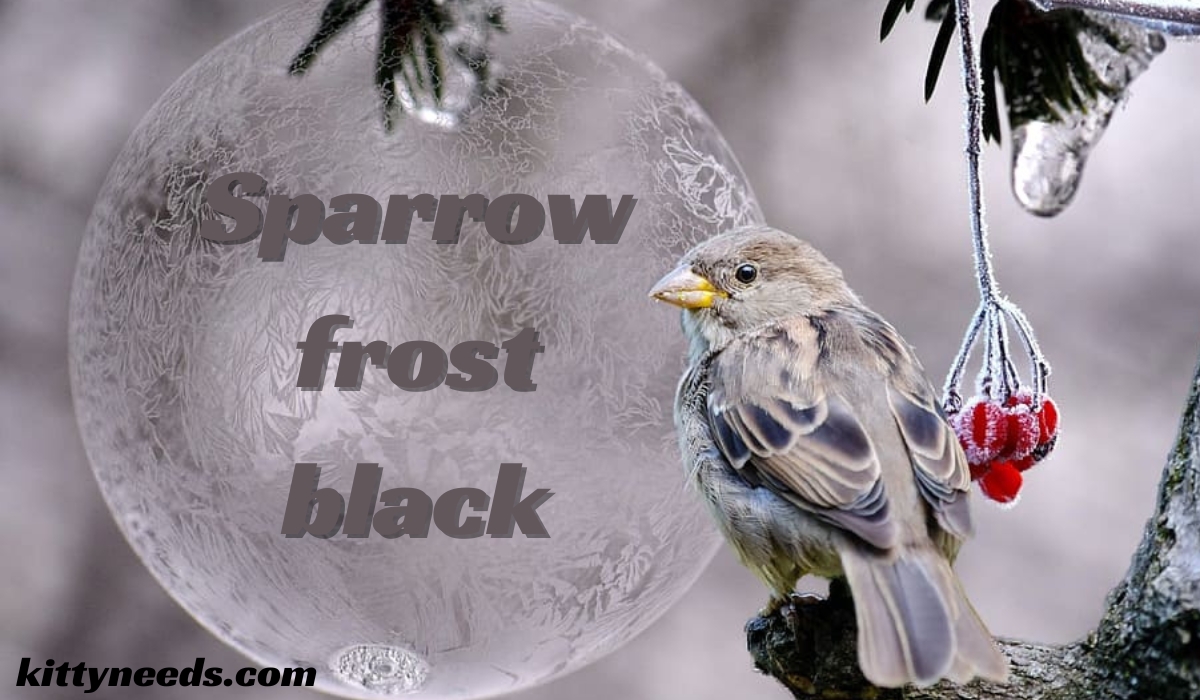
Sparrow Frost Black
Birdwatchers and nature enthusiasts have long been captivated by the enigma of the Sparrow Frost Black. Rumored to be a legendary creature with snowy white feathers that turn obsidian black under the first frost of winter, the Sparrow Frost Black seems plucked straight from a tale of myth and magic. This species has generated discussions, anecdotes, and even fervent online debates about its existence. But amidst the passion, what is the truth behind this cryptic creature?
Is the Sparrow Frost Black Real?
In ornithological circles, the Sparrow Frost Black stands as a curiosity—a subject of folklore and perhaps a misconception more than a tangible avian entity. There is no scientific evidence to support the existence of a Sparrow Frost Black as a distinct species of bird. Delving further, no peer-reviewed research, documented sighting, or DNA evidence has been presented to substantiate the myth.
But could there be more to it? Perhaps the Sparrow Frost Black is not entirely mythical but a result of misidentification. Many black speckled or entirely black passerines exist across the globe, and under particular conditions, a common sparrow might seem otherworldly.
Possible Explanations for the Sparrow Frost Black
The elusiveness of the Sparrow Frost Black could be ascribed to a few plausible scenarios.
Melanistic Sparrows
It is well established in the field of ornithology that sparrows, like many birds, exhibit melanistic variations. Melanism refers to the occurrence of a substantial amount of black or nearly black pigmentation in an animal. Therefore, the Sparrow Frost Black observed under winter’s morning light could simply be a sparrow with a high level of melanin, causing its feathers to appear black.
Lighting Illusions
The phenomenon of lighting and environmental conditions dramatically changing the appearance of objects is well-documented. A regular sparrow under certain lighting, especially frosty or misty ones, could have its typical brown or gray feathers appear extraordinarily dark, thus giving rise to the iconic Sparrow Frost Black.
Misidentification with Other Sparrows
Additionally, the confusion could stem from the similarity shared with other black sparrow species, such as the Black Sparrow (Passer hispaniolensis) or the potential occurrence of instances where the Eurasian Tree Sparrow (Passer montanus), often more widespread and known, is mistakenly assumed to be the elusive Sparrow Frost Black.
Black Sparrow Species to Look Out For
While the Sparrow Frost Black might not be real, there are indeed black sparrow species worth looking for. Here are a few of the many:
Black Sparrow (Passer hispaniolensis)
This species, found in various countries including Tunisia, Morocco, and Algeria, boasts a predominantly black plumage, which may have contributed to the confusion surrounding the Sparrow Frost Black. The black sparrow is not mythical—it’s here and adapting to the world around it.
House Sparrow with Melanism
A familiar sight in many urban environments, the House Sparrow is known for its gray-and-brown plumage. However, instances of melanism occur among these populations, leading to the emergence of “black” house sparrows, observable in certain regions of the world.
YOU MAY ALSO LIKE
Black Beauty: Unveiling the Alluring Pitbull Dog Black
Conclusion:
While the Sparrow Frost Black may continue to stir the imagination and birding forums, it serves as a reminder of the incredible diversity found within the world of sparrows. Each species, whether entirely inky or speckled with different colors, contributes to the rich tapestry of avian life.
Sparrows, an emblem of adaptability and ubiquity, are as intriguing in their collective behaviors as they are in their individual appearances. Bird watching is an invitation to appreciate both common sights and the occasional spectacles. This includes understanding the context that shapes our perception of the natural world, from the light that illuminates feathers to the power of folklore in making legends out of sparrows.
In the end, whether the Sparrow Frost Black is a figment of storytelling or simply a case of winter’s artful lighting, the quest to unravel its mystery is one small part of the larger adventure in understanding and cherishing the life that surrounds us. For enthusiasts and casual observers alike, the world of sparrows is wide and wondrous, promising delights and discoveries at every turn. Keep your binoculars at the ready, and who knows what you might find fluttering through the pages of reality and imagination.
Frequently Asked Questions
1. Is the Sparrow Frost Black a real bird species?
No, according to scientific research and available ornithological evidence, the Sparrow Frost Black is not recognized as a real bird species. It appears to be more of a myth or a case of misidentification of existing sparrow species under specific environmental conditions.
2. What could cause a sparrow to appear black?
Several factors could lead to a sparrow appearing black. These include melanism, which is an overabundance of black pigmentation in animals, lighting illusions, especially under frosty or misty conditions, and the possibility of confusing them with other naturally black species of sparrows.
3. Are there any real black sparrow species?
Yes, there are sparrow species with predominantly black plumage, such as the Black Sparrow (Passer hispaniolensis), which is found in regions like Tunisia, Morocco, and Algeria. Additionally, some house sparrows exhibit melanism, resulting in a darker appearance.
4. Why do people believe in the Sparrow Frost Black myth?
The belief in the Sparrow Frost Black myth likely stems from a combination of factors including the human love for folklore, mistaken identity under specific lighting conditions, and the real phenomenon of melanism in some sparrows that can lead to individuals appearing darker than usual.
5. How can I differentiate between a Sparrow Frost Black and a melanistic sparrow?
Since the Sparrow Frost Black is not a scientifically recognized species, any sparrow observed with darker plumage under winter conditions is likely a case of melanism or misidentification. Observing the bird under different lighting conditions or consulting with ornithologists can provide clarity.
Pets and Animals
How Much Do Bearded Dragons Cost? Your Comprehensive Guide
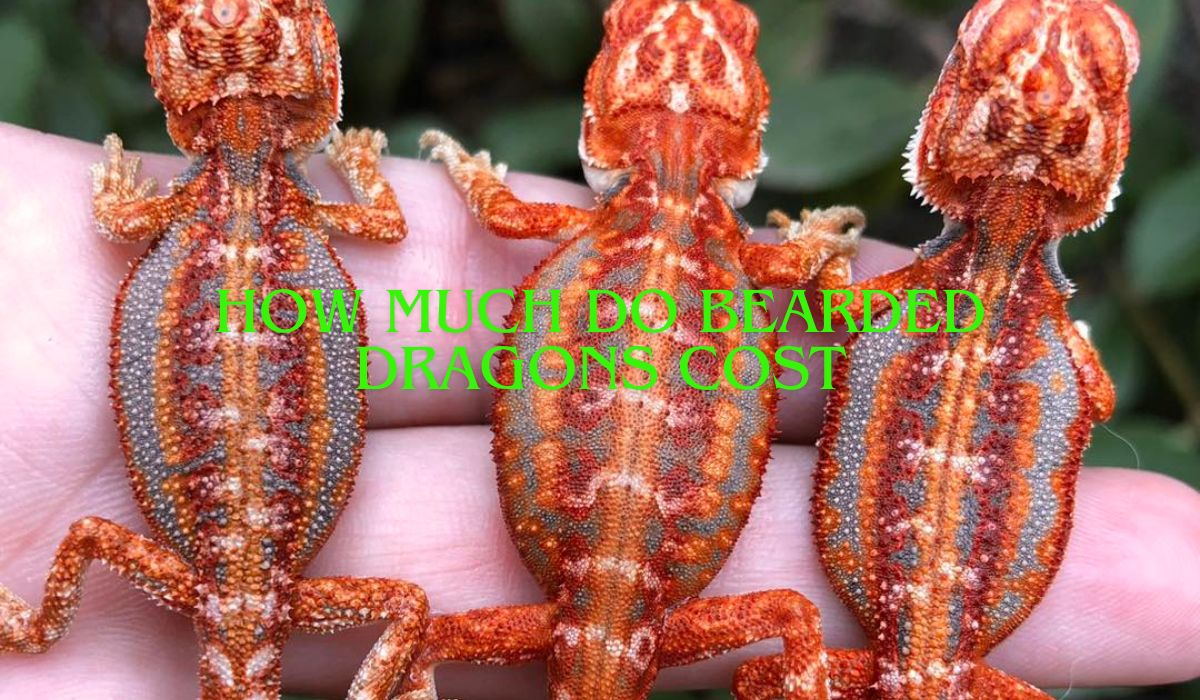
Introduction:
Bearded dragons are fascinating reptiles that have gained popularity as pets due to their docile nature and unique appearance. If you’re considering adding one of these scaly companions to your family, one of the first questions you may have is, “How much do bearded dragons cost?” In this comprehensive guide, we’ll delve into all the factors that contribute to the cost of owning a bearded dragon, from initial setup expenses to long-term care costs.
Chapter 1: Initial Purchase Price
When it comes to buying a bearded dragon, the cost can vary depending on factors such as age, morph, and where you purchase them from. Here’s a breakdown of what you can expect to pay:
- Hatchlings: Baby bearded dragons, or hatchlings, are typically the least expensive option, ranging from $20 to $100. However, keep in mind that younger dragons may require more specialized care.
- Juveniles: Juvenile bearded dragons, between 2 to 4 months old, may cost between $50 to $200, depending on their size and coloration.
- Adults: Adult bearded dragons, over a year old, can range from $100 to $500 or more, with factors such as gender, size, and color influencing the price.
- Morphs: Bearded dragons come in a variety of morphs, which are variations in color and pattern. Rare or high-demand morphs can fetch prices upwards of $1,000 or more.
Chapter 2: Habitat Setup Costs
Creating the perfect habitat for your bearded dragon is essential for their health and well-being. Here’s what you’ll need to consider in terms of setup costs:
- Enclosure: A suitable enclosure for a bearded dragon can range from $50 for a basic tank to $500 or more for a custom-built vivarium.
- Heating and Lighting: Proper heating and lighting are crucial for maintaining the right temperature and providing UVB exposure. Expect to spend around $50 to $200 on heat lamps, UVB bulbs, and fixtures.
- Substrate and Decor: Substrate, such as reptile carpet or tile, and decor items like rocks, branches, and hides, can add another $20 to $100 to your setup costs.
- Thermometers and Hygrometers: Accurate temperature and humidity monitoring are essential. Plan to spend around $20 to $50 on quality thermometers and hygrometers.
Chapter 3: Ongoing Care Expenses
Once you’ve set up your bearded dragon’s habitat, there are ongoing expenses to consider for their care and maintenance:
- Food: Bearded dragons require a varied diet consisting of live insects, fruits, and vegetables. Depending on the size of your dragon and the quality of the food, expect to spend around $20 to $50 per month on food.
- Veterinary Care: Routine veterinary check-ups and potential medical expenses should be factored into your budget. While the cost can vary, budgeting around $100 to $300 per year for vet expenses is a good starting point.
- Substrate Replacement: Substrate will need to be replaced regularly to maintain cleanliness and hygiene in your dragon’s enclosure. Budget around $20 to $50 per month for substrate replacement.
- Supplements: Calcium and vitamin supplements are essential for bearded dragons’ health. Plan to spend around $10 to $20 per month on supplements.
Chapter 4: Additional Expenses
In addition to the essential costs mentioned above, there are other potential expenses to consider:
- Enclosure Upgrades: As your bearded dragon grows, you may need to upgrade their enclosure to accommodate their size. Budget for potential enclosure upgrades down the line.
- Accessories: Additional accessories such as basking platforms, climbing structures, and enrichment toys can enhance your dragon’s habitat but will add to your expenses.
- Travel Costs: If you need to travel with your bearded dragon or board them while you’re away, factor in these additional expenses.
- You may also like: Revealing the Enigma of Ovestæ: Delving into the Secrets Behind This Intriguing Locale
Conclusion
While the initial cost of purchasing a bearded dragon may vary depending on factors such as age and morph, it’s essential to consider the ongoing expenses associated with their care and maintenance. By budgeting for both the upfront and long-term costs, you can ensure that you provide your scaly friend with the best possible care without breaking the bank. So, if you’re ready to embark on the journey of owning a bearded dragon, remember to plan ahead and budget accordingly for a rewarding and fulfilling experience.
FAQS
- How much does a bearded dragon cost?
- The cost of a bearded dragon can vary depending on factors such as age, morph, and where you purchase them from. Hatchlings may range from $20 to $100, juveniles from $50 to $200, and adults from $100 to $500 or more. Rare morphs can fetch prices upwards of $1,000.
- What is the average setup cost for a bearded dragon habitat?
- The average setup cost for a bearded dragon habitat includes the enclosure, heating and lighting equipment, substrate, decor, and monitoring tools. Expect to spend between $200 to $800 or more depending on the size and complexity of the setup.
- How much do bearded dragon owners spend on food monthly?
- Bearded dragon owners typically spend around $20 to $50 per month on food for their pets. This includes live insects, fruits, and vegetables to provide a balanced diet for their reptile companions.
- What are the ongoing care expenses for bearded dragons?
- Ongoing care expenses for bearded dragons include food, veterinary care, substrate replacement, and supplements. Budgeting around $100 to $300 per year for vet expenses and $20 to $50 per month for food and substrate replacement is recommended.
- Are there any additional expenses associated with owning a bearded dragon?
- Yes, there can be additional expenses associated with owning a bearded dragon. These may include enclosure upgrades as the dragon grows, purchasing accessories such as basking platforms and enrichment toys, and potential travel costs if you need to transport or board your pet.
Pets and Animals
How Many Legs Does a Caterpillar Have? Unveiling the Mysteries of Lepidoptera Locomotion
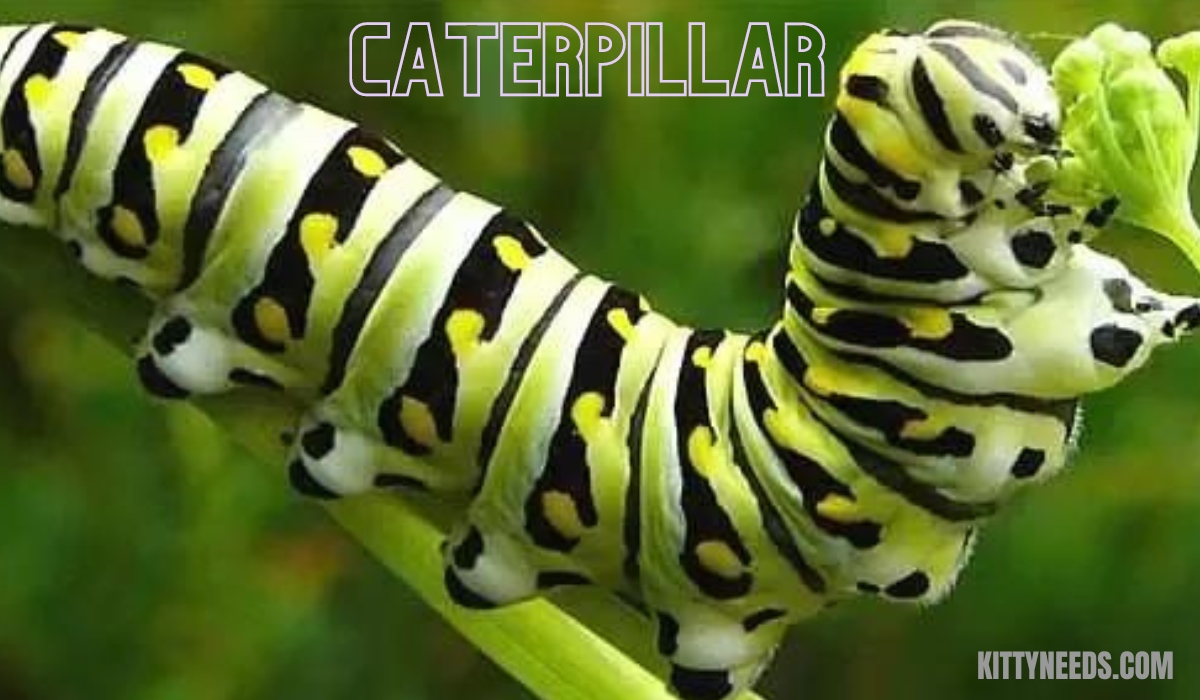
How Many Legs Does A Caterpillar Have
Caterpillars are some of nature’s most remarkable creatures, known for their unique and intriguing features. A common question among those fascinated by these larval forms of butterflies and moths is, “How many legs does a caterpillar have?” The answer is not as straightforward as one might think, and to fully understand, we must explore the fine details of caterpillar anatomy and behavior. If you’re a science educator or a nature enthusiast looking to deepen your understanding of caterpillars, read on as we dissect this intriguing insect mystery.
A Caterpillar’s Unique Journey to Adulthood
Before we focus on their legs, it’s important to realize the larger context of caterpillars in nature. These larvae are the feeding and growth stage of the Lepidoptera order, which includes more than 180,000 species. The transformation from a seemingly multiple-legged creature to a winged butterfly or moth is a story that evokes wonder and awe, making it a perennial favorite of insect tales.
But the story begins with the soggy, wiggling form of a caterpillar, sometimes misinterpreted due to its numerous short, stumpy legs that seem to cover its entire underside.
True Legs vs. Prolegs: The Legitimate Distinction
While it may appear that a caterpillar has dozens of legs due to its segmented body, the reality is more structural than it is in sheer numbers. All insects, including caterpillars, have what’s referred to as “true legs,” which are jointed and, in the case of caterpillars, there are six of them. These true legs help the caterpillar move about and are located on the thoracic segments.
In addition to the six true legs, caterpillars have prolegs. Unlike true legs, prolegs are not true jointed legs but rather fleshy, stubby appendages used primarily for gripping surfaces and providing additional body support. Most caterpillars have up to five pairs of prolegs on their abdomen, though this can vary among different species.
The distinction between true legs and prolegs is crucial in understanding a caterpillar’s locomotion and general functionality.
Decoding the Number Game: How Many Legs in Total?
When you tally the true legs and prolegs of a caterpillar, you end up with up to six true legs and a varying number of prolegs, depending on the species. However, if we talk about “legs” in the broader sense of locomotion appendages, caterpillars can have anywhere from 10 to 16 “legs” in total, when considering both types of appendages.
This range in leg count can lead to the confusion surrounding caterpillar anatomy, with different sources sometimes counting only the true legs or including all the prolegs in the total count.
Legwork in Caterpillar Locomotion
True legs are used for walking, which is quite an active part of a caterpillar’s day, considering how much they eat and the need to find new food sources constantly. Caterpillars move in a distinctive “looping” gait using their true legs, arching their back and then elongating their body to be pushed forward.
Prolegs, on the other hand, are not true legs but are very important in a caterpillar’s movement nonetheless. They are key to a caterpillar’s gripping ability, which is especially crucial when hanging upside down to molt or forming a chrysalis. Prolegs also help caterpillars move in a wave-like pattern—grasping with the front legs, then with the middle, and so on—providing a smooth way to glom about foliage without falling prey to gravity’s pull.
YOU MAY ALSO LIKE
What is Qxefv? A Complete Guide to Caring for Your Exotic Companion
The Bottom Line on Caterpillar Limbs
In conclusion, a caterpillar’s leg count is somewhat ambiguous depending on the method of counting. But if we’re to include both true legs and prolegs, the answer is somewhere between 10 and 16, though 16 will be the most accurate count when all prolegs are present.
Understanding the intricacies of a caterpillar’s legs is essential in appreciating the mechanics of their daily activities, from munching on leaves to preparing for the chrysalis stage. The next time you come across one of these remarkable creatures, watch their legwork in action, and you’ll have a new appreciation for the beautiful and complex world of Lepidoptera.
It is from this humble beginning, with however many legs, that the metamorphosis sets in, eventually gifting the world with the breathtaking visual poetry of butterflies and moths in flight.
FAQs
1. How can you tell the difference between true legs and prolegs on a caterpillar?
True legs on a caterpillar are jointed and located on the thoracic segments, close to the head. They resemble more traditional insect legs and are only six in number. In contrast, prolegs are fleshy, non-jointed appendages found on the abdomen of the caterpillar, and a caterpillar can have up to five pairs of these.
2. Why do caterpillars have prolegs?
Prolegs assist caterpillars in gripping onto surfaces and provide additional support to their bodies. This is particularly crucial for navigation on foliage and during the hanging phase of transforming into a chrysalis. They enable caterpillars to move smoothly in a wave-like motion, ensuring they can reach new food sources efficiently and hang securely when required.
3. Do all caterpillars have the same number of legs?
No, the number of prolegs a caterpillar has can vary among different species, which means that not all caterpillars will have the same total number of legs. However, all caterpillars have six true legs, but when accounting for prolegs, the total can range from 10 to 16 legs.
4. How do caterpillars use their legs to move?
Caterpillars exhibit a distinctive “looping” gait for movement. They use their true legs for walking and prolegs for gripping. The movement involves arching their back to bring the rear prolegs closer to the true legs and then elongating their body forward, effectively propelling them in a rhythmic pattern.
5. What happens to caterpillar legs during metamorphosis?
During the metamorphosis from a caterpillar to a butterfly or moth, the structure of their legs changes. The six true legs remain and develop into the legs of the adult butterfly or moth, consistent with the typical insect body plan. The prolegs, however, do not persist into adulthood; they are lost as the caterpillar transforms into a chrysalis and eventually emerges as a fully winged adult.
Pets and Animals
What is Qxefv? A Complete Guide to Caring for Your Exotic Companion
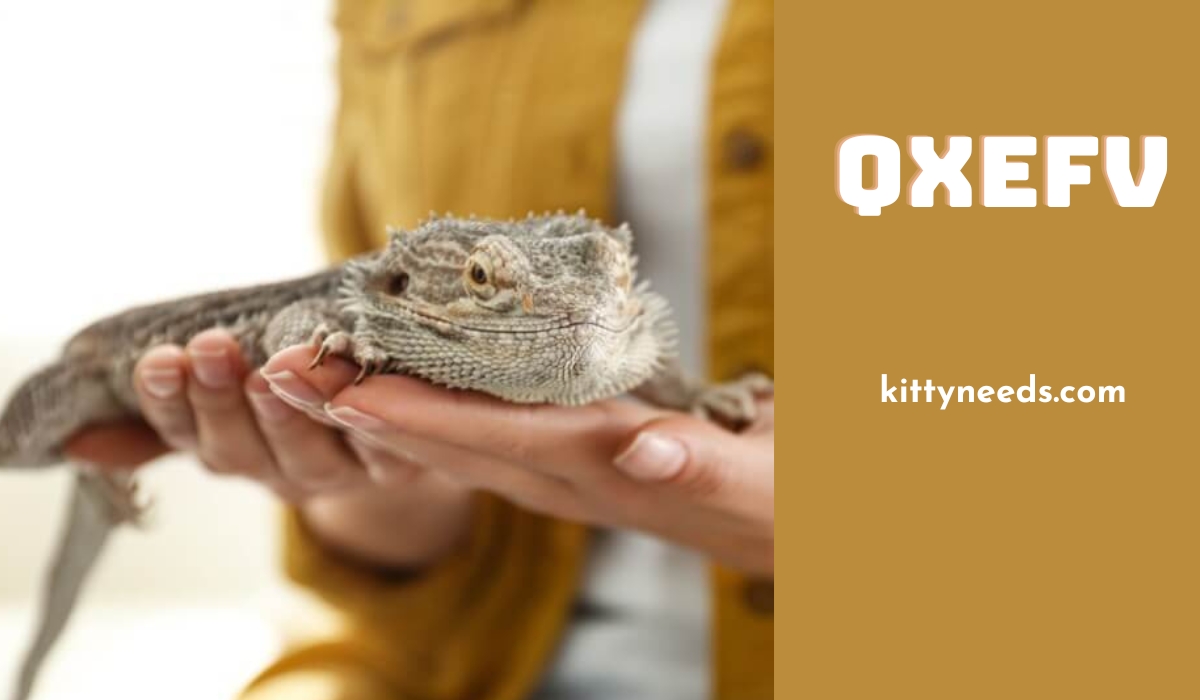
Welcome to the complete guide on caring for a rather unusual yet fascinating pet—the Qxefv. For those who revel in the idea of tending to a unique creature, the Qxefv, sometimes known as the ‘rainbow-tailed dart lizard’, is an enticing prospect. This comprehensive blog post is designed to acquaint potential Qxefv owners with everything they need to know to ensure the comfort and well-being of their new scaled friend. From setting up the perfect habitat to understanding the intricacies of their health, we’ll cover how to be the ideal companion to this captivating reptile.
Chapter 1: An Introduction to the Qxefv
The Qxefv is a miniature lizard with a big heart, hailing from the deep rainforests of a far-off land. Its vivid coloring and small stature often take center stage in pet enthusiast communities, making it a sought-after addition to homes where an affinity for the exotic reigns. This guide is tailored to those with a passion for pets that are out of the ordinary.
Chapter 2: Unraveling the Origins and Habitat of Qxefv
To properly care for a Qxefv, one must understand its origins and the habitat it evolved within. For the Qxefv, this is the lush, dense canopy of the deep rainforests, a humid and warm ecosystem. We’ll explore how to mimic these crucial conditions in your home environment, the concept of environmental enrichment, and more.
Chapter 3: Care and Maintenance of Your Qxefv
This chapter is an actionable guide to the optimal care and maintenance of your Qxefv. From temperature control to creating a safe and engaging habitat, we’ll provide all the necessary information to ensure that your Qxefv remains healthy and happy in its new environment.
Chapter 4: Prioritizing the Health and Wellness of Your Qxefv
Prevention is key when it comes to the health of your Qxefv. We’ll cover regular health checks, common health issues, nutritional needs, and safe handling practices in this important section.
Chapter 5: Integrating Qxefv into Your Home and Lifestyle
Would Qxefv thrive in your space? We’ll discuss the nuances of Qxefv compatibility with family life and other pets, and provide valuable insights into creating an environment that fosters positive interaction and continued well-being for your unique companion.
Chapter 6: Navigating Legalities and Ethical Ownership
Owning a Qxefv comes with certain responsibilities in terms of legality and ethical considerations. This section will address regulations on pet ownership, breeding, and importation of Qxefv, ensuring your love for this exotic pet is in line with local guidelines and responsible pet stewardship.
Chapter 7: The Qxefv Conclusion and Beyond
To wrap up, this comprehensive guide will summarize the unique features and care requirements of the Qxefv. We will also underscore the importance of considering this pet as a commitment and an enchanting addition to your life for years to come.
It’s time to step into the extraordinary world of Qxefv care. Whether you’re planning to bring home your first or you’re a seasoned owner seeking new insights, this guide is your roadmap to a more enriched and informed experience with the charming and enigmatic Qxefv. Now, without further ado, it’s time to unveil the secrets to caring for a pet like no other.
YOU MAY ALSO LIKE
Finding the Perfect Pet Shop: A Guide to “Pet Shop Terdekat”
Frequently Asked Questions (FAQs)
What is the ideal temperature range for a Qxefv habitat?
The ideal temperature range for a Qxefv habitat should mimic the warm, humid conditions of its native rainforest. This means maintaining an ambient temperature between 75°F and 85°F (24°C to 29°C) during the day, with a slight drop at night to mimic natural conditions, ensuring the comfort of your Qxefv.
How often should I feed my Qxefv, and what is their preferred diet?
Qxefvs should be fed daily with a diet consisting of small insects like crickets, fruit flies, and occasionally small mealworms. It’s crucial to ensure the insects are gut-loaded (fed nutritious food) to provide the proper nutrients to your Qxefv. Also, a variety of fresh, safe fruits in small amounts can be offered to supplement their diet.
Can Qxefvs cohabit with other pets?
Qxefvs are generally solitary and may stress easily in the presence of other pets, especially larger animals. If you have other pets, it’s essential to provide a quiet, secure location for your Qxefv’s habitat away from high-traffic areas. Observing your Qxefv’s behavior and adjusting as needed is key to ensuring a peaceful cohabitation.
How do I ensure my Qxefv’s habitat maintains the proper humidity?
Maintaining proper humidity levels, between 70% to 80%, is crucial for a Qxefv’s health. This can be achieved by daily misting of their habitat with water and incorporating live plants and a substrate that retains moisture. Monitoring with a reliable hygrometer will help you keep the habitat within the ideal humidity range.
Is it legal to own a Qxefv in all regions?
Ownership laws for exotic pets like the Qxefv vary widely by region and country. It’s essential to research and comply with local wildlife and exotic pet regulations before attempting to acquire a Qxefv. This ensures your petkeeping is both legal and ethical, safeguarding the well-being of your Qxefv and supporting conservation efforts for their species.
-

 Pets and Animals4 months ago
Pets and Animals4 months agoShovel Dog: Everything You Need to Know
-
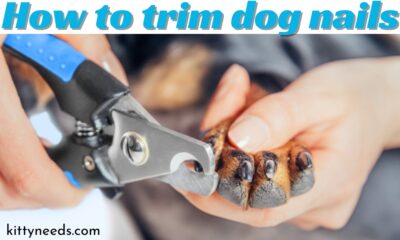
 Pets and Animals4 months ago
Pets and Animals4 months agoHow To Trim Dog Nails: A Step-by-Step Guide for Painless Pups and Peace of Mind
-

 Pets and Animals4 months ago
Pets and Animals4 months agoBlack Beauty: Unveiling the Alluring Pitbull Dog Black
-
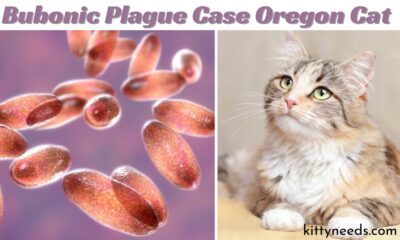
 Pets and Animals4 months ago
Pets and Animals4 months agoBubonic Plague case oregon cat: A Modern Tale of Medieval Disease
-

 Pet Care Guides4 months ago
Pet Care Guides4 months agoHere’s Why Nationwide Pet Insurance Should Be on Your Radar
-

 Pets and Animals4 months ago
Pets and Animals4 months agoHow Often Do You Take A Cat to the Vet? A Guide for Caring Owners
-

 Pet Care Guides4 months ago
Pet Care Guides4 months agoGive a Loving Home: Adopt a Pet, Change a Life with Pet finder
-

 Other4 months ago
Other4 months agoHow to Hello kitty drawing: A Step-by-Step Guide for Fans of All Ages
